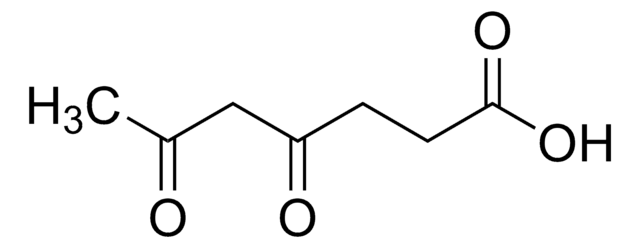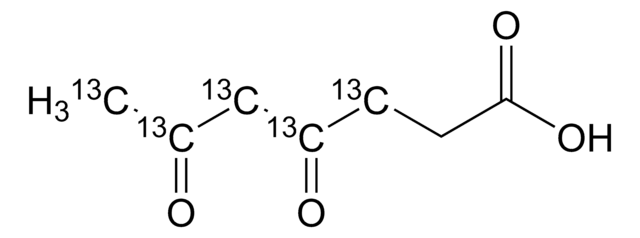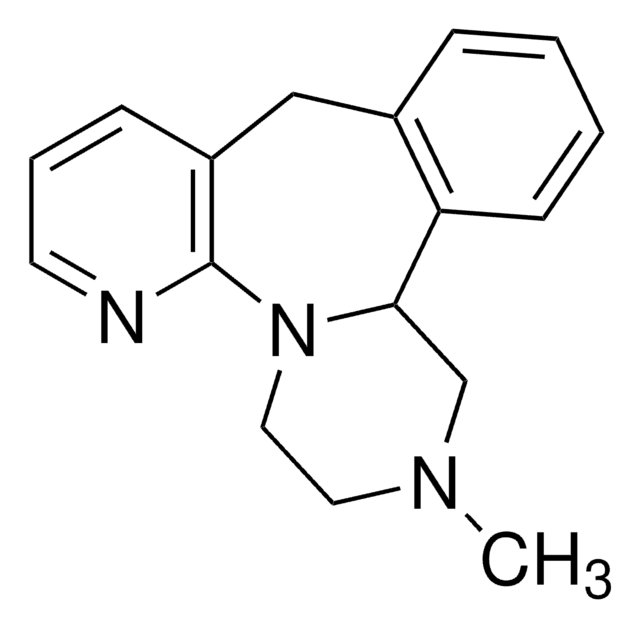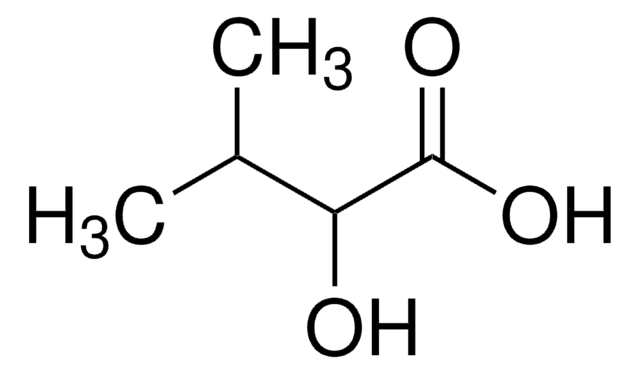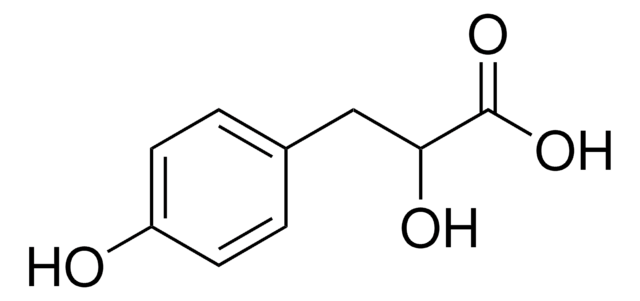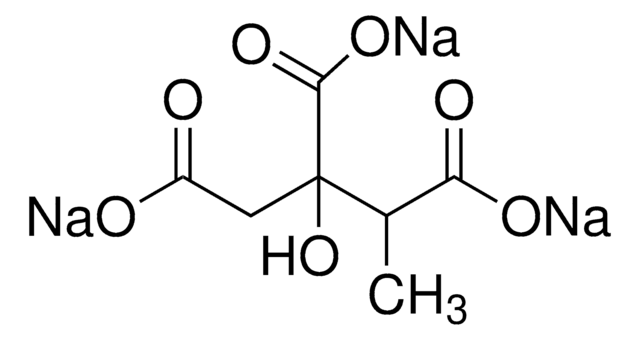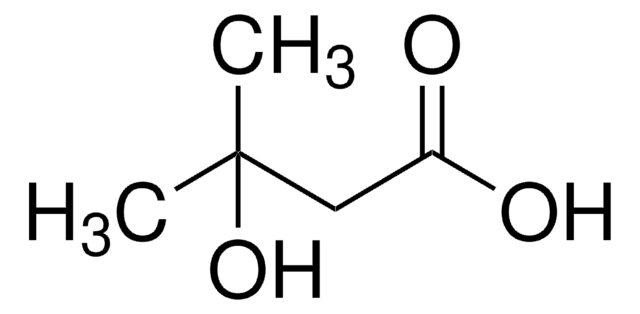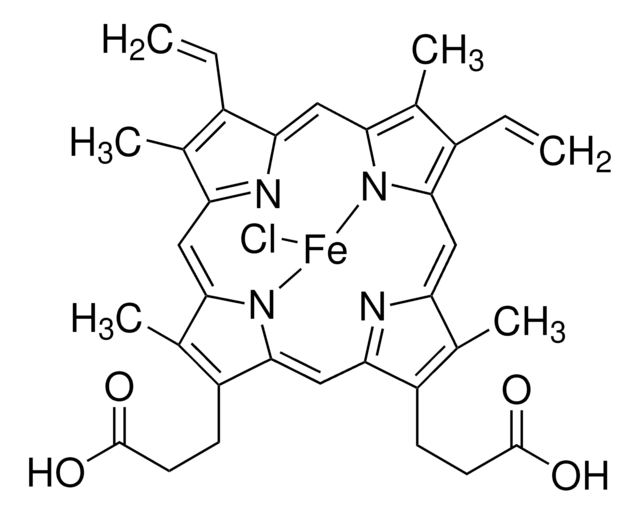D1415
4,6-Dioxoheptanoic acid
powder
Synonym(s):
Succinylacetone
Sign Into View Organizational & Contract Pricing
All Photos(4)
About This Item
Linear Formula:
CH3COCH2COCH2CH2CO2H
CAS Number:
Molecular Weight:
158.15
MDL number:
UNSPSC Code:
12352211
PubChem Substance ID:
NACRES:
NA.25
Recommended Products
form
powder
Quality Level
mp
66-67 °C (lit.)
lipid type
saturated FAs
storage temp.
2-8°C
SMILES string
CC(=O)CC(=O)CCC(O)=O
InChI
1S/C7H10O4/c1-5(8)4-6(9)2-3-7(10)11/h2-4H2,1H3,(H,10,11)
InChI key
WYEPBHZLDUPIOD-UHFFFAOYSA-N
Looking for similar products? Visit Product Comparison Guide
Application
4,6-Dioxoheptanoic acid has been used:
- as component of dendritic cell conditioning medium and in the inhibition of ALA dehydratase (ALAD) in dendritic cells(50)
- as an inhibitor of heme biosynthesis in human mononuclear cells(51) and HeLa cells(52)
- as a standard for the quantification of succinylacetone from Plasmodium falciparum cultures(53)
Biochem/physiol Actions
4,6-Dioxoheptanoic acid is an inhibitor of heme biosynthesis. It is a catabolic byproduct of tyrosine breakdown and inhibits δ-aminolevulinic acid (ALA) dehydratase enzyme. It is a potential marker for detecting tyrosinemia type I and is measured in dried blood spot of new borns.
An inhibitor of heme biosynthesis
related product
Product No.
Description
Pricing
WGK
WGK 3
Flash Point(F)
Not applicable
Flash Point(C)
Not applicable
Personal Protective Equipment
dust mask type N95 (US), Eyeshields, Gloves
Certificates of Analysis (COA)
Search for Certificates of Analysis (COA) by entering the products Lot/Batch Number. Lot and Batch Numbers can be found on a product’s label following the words ‘Lot’ or ‘Batch’.
Already Own This Product?
Find documentation for the products that you have recently purchased in the Document Library.
Customers Also Viewed
lonp1-dependent Breakdown Of Mitochondrial 5-aminolevulinic Acid Synthase Protein By Heme In Human Liver Cells: 904
Tian Q, et al.
Hepatology, 54(4), 785A-785A (2011)
C M Mak et al.
Hong Kong medical journal = Xianggang yi xue za zhi, 24(4), 340-349 (2018-03-03)
Hereditary channelopathies and cardiomyopathies are potentially lethal and are clinically and genetically heterogeneous, involving at least 90 genes. Genetic testing can provide an accurate diagnosis, guide treatment, and enable cascade screening. The genetic basis among the Hong Kong Chinese population
Hilde Laeremans et al.
JIMD reports, 53(1), 90-102 (2020-05-13)
Nitisinone is used to treat hereditary tyrosinemia type 1 (HT-1) by preventing accumulation of toxic metabolites, including succinylacetone (SA). Accurate quantification of SA during newborn screening is essential, as is quantification of both SA and nitisinone for disease monitoring and
Succinylacetone as primary marker to detect tyrosinemia type I in newborns and its measurement by newborn screening programs
De Jesus V, et al.
Molecular Genetics and Metabolism, 113(1-2), 67-75 (2014)
The effects of levulinic acid and 4, 6-dioxoheptanoic acid on the metabolism of etiolated and greening barley leaves
Meller E and Gassman ML
Plant Physiology, 67(4), 728-732 (1981)
Our team of scientists has experience in all areas of research including Life Science, Material Science, Chemical Synthesis, Chromatography, Analytical and many others.
Contact Technical Service